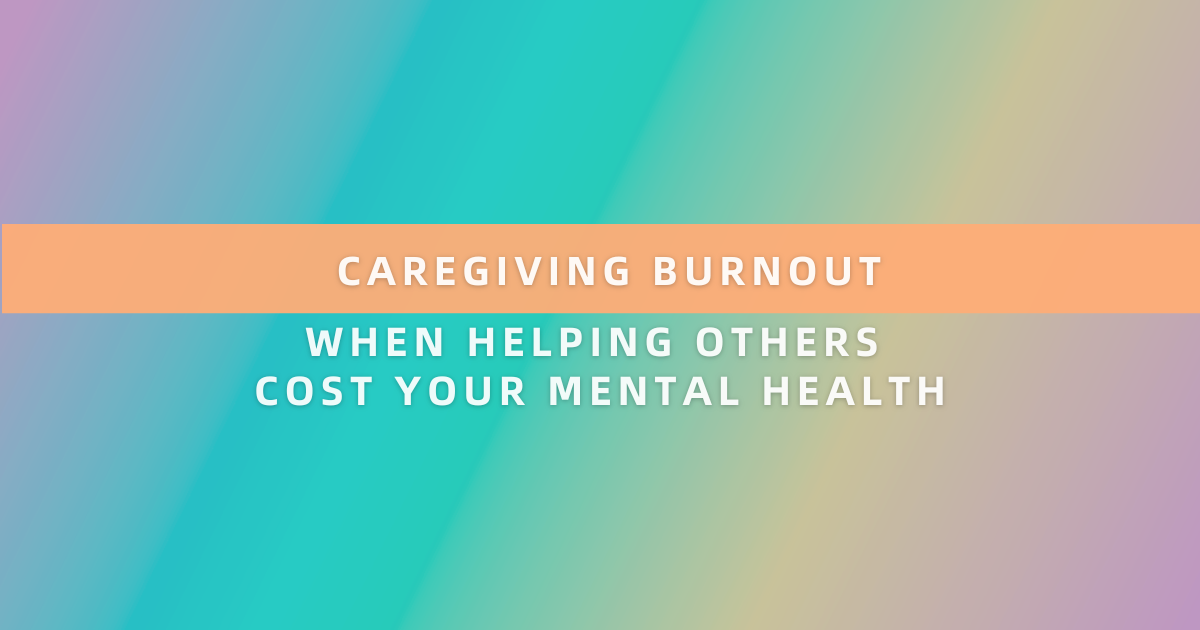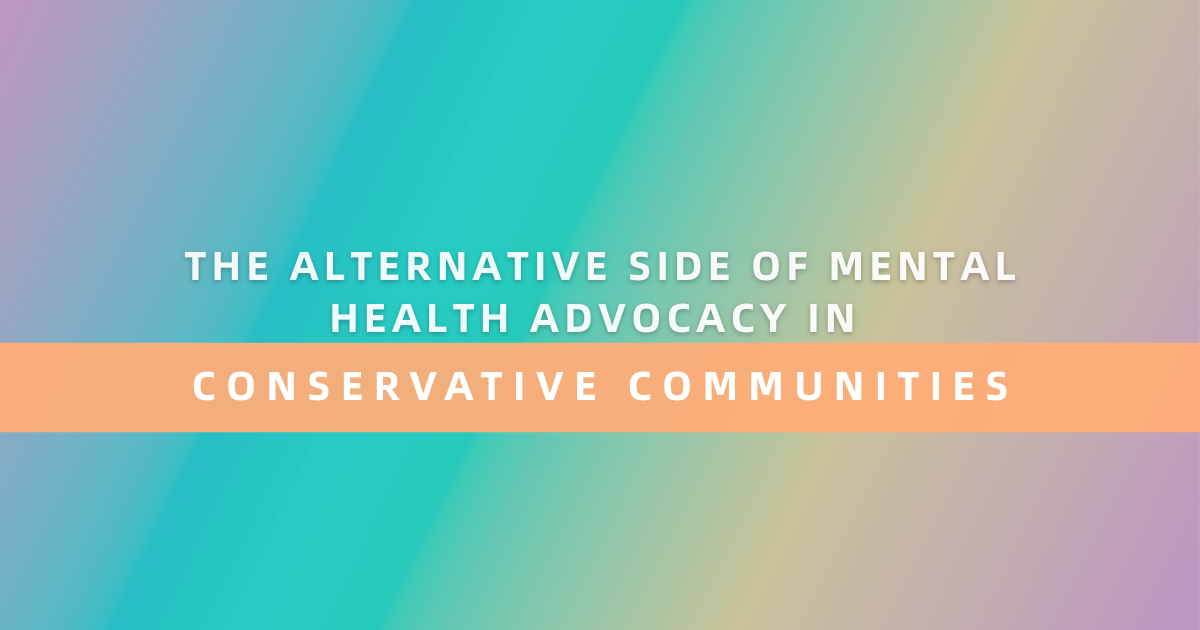Whether caring for aging parents, a spouse with chronic illness, children with special needs, or working in healthcare, millions find themselves in roles where someone else’s well-being depends on their constant attention and energy.
What starts as an act of love or professional dedication can gradually transform into something that drains every reserve of physical and emotional strength. The guilt of taking a break battles with the exhaustion that makes even simple tasks feel monumental. This is caregiving burnout, and it’s affecting more people than ever before.
According to the National Alliance for Caregiving, over 53.0 million Americans provide unpaid care to an adult or child with special needs [1]. That’s more than one in five adults dedicating significant time and energy to caregiving, often while juggling work, family, and their own health needs. The hidden cost of this care extends far beyond financial implications, reaching deep into the physical, emotional, and mental health of those who give so much of themselves to others.
Understanding Caregiving Burnout
Caregiving burnout represents a complex interplay of physical exhaustion, emotional depletion, and mental fatigue that develops when the demands of caregiving consistently exceed available resources and coping capacity. Unlike simple tiredness or temporary stress, burnout represents a fundamental breakdown in the caregiver’s ability to maintain their role without significant personal cost.
The Medical Definition
Healthcare professionals recognize caregiver burnout as a distinct syndrome characterized by three primary dimensions:
- Emotional exhaustion: The depletion of emotional resources, leaving caregivers feeling they have nothing left to give
- Depersonalization: A sense of detachment from the care recipient and others, often accompanied by cynicism or negative attitudes
- Reduced personal accomplishment: Feelings of ineffectiveness and lack of achievement in the caregiving role
This syndrome doesn’t develop overnight. Research indicates that burnout typically emerges after intensive caregiving, though this timeline can be shorter for those caring for individuals with high-need conditions like dementia or severe disabilities.
The Stress-Burnout Continuum
Understanding where stress ends and burnout begins helps caregivers recognize when they need intervention:
Normal Caregiving Stress:
- – Temporary feelings of being overwhelmed
- – Occasional irritability that resolves with rest
- – Ability to find moments of joy in caregiving
- – Maintaining hope for the future
- – Physical tiredness that improves with sleep
Early Burnout Warning Signs:
- – Persistent exhaustion despite rest
- – Increasing cynicism about the caregiving role
- – Difficulty finding positive moments
- – Physical symptoms are becoming chronic
- – Beginning to isolate from support systems
Established Burnout:
- – Complete emotional exhaustion
- – Inability to empathize with the care recipient
- – Significant physical health problems
- – Clinical depression or anxiety
- – Thoughts of escaping or harming oneself/others
Contributing Factors
Multiple factors converge to create burnout conditions:
- Role Confusion: Many caregivers struggle with the shift from spouse, child, or friend to caregiver, creating identity conflicts and emotional strain.
- Unrealistic Expectations: Beliefs that love should make caregiving easy or that accepting help represents failure set caregivers up for burnout.
- Lack of Training: Unlike professional caregivers, family members often provide complex care without adequate preparation or support.
- 24/7 Responsibility: The constant vigilance required in many caregiving situations prevents the mental rest necessary for resilience.
- Progressive Conditions: Caring for someone whose condition will only worsen creates anticipatory grief and hopelessness that accelerates burnout.
The Neuroscience of Compassion Fatigue
Recent neuroscience research reveals how chronic caregiving stress changes the brain, explaining why burnout feels so overwhelming and difficult to overcome.
Brain Changes in Chronic Stress
When exposed to prolonged stress, several key brain changes occur:
- Hippocampal Shrinkage: The hippocampus, crucial for memory and emotional regulation, can shrink under chronic stress [6]. This explains why burned-out caregivers often experience memory problems and emotional volatility.
- Prefrontal Cortex Impairment: The brain’s executive center, responsible for decision-making and emotional control, becomes less active. Caregivers report feeling unable to make simple decisions or control emotional responses.
- Amygdala Hyperactivity: The fear center becomes overactive, creating a constant state of hypervigilance. Every phone ring or unusual sound triggers a stress response, exhausting the nervous system.
- Disrupted Neurochemistry: Chronic stress depletes dopamine and serotonin while maintaining elevated cortisol levels. This chemical imbalance directly contributes to depression, anxiety, and the inability to feel pleasure or satisfaction.
The Empathy Paradox
Ironically, the very empathy that makes someone a devoted caregiver can accelerate burnout. Mirror neurons, which allow us to feel others’ experiences, can become overactive in caregivers, leading to:
- – Absorbing the care recipient’s pain and distress
- – Difficulty maintaining emotional boundaries
- – Physical mirroring of symptoms (caregivers reporting pain similar to their care recipients)
- – Emotional contagion, where the caregiver cannot separate their feelings from those they’re caring for
Understanding these neurological changes validates the real, physical nature of burnout and emphasizes why recovery requires more than just positive thinking or temporary breaks.
Warning Signs You Can’t Ignore
Recognizing burnout requires honest self-assessment across multiple life domains. These warning signs often develop gradually, making them easy to dismiss until they reach crisis levels.
Physical Warning Signs
The body often signals burnout before the mind fully acknowledges it:
Immune System Compromise:
- – Catching every cold or flu
- – Slow wound healing
- – Reactivation of dormant conditions (shingles, cold sores)
- – New allergies or sensitivities
- – Chronic infections
Sleep Disruptions:
- – Insomnia despite exhaustion
- – Frequent waking with racing thoughts
- – Nightmares about caregiving scenarios
- – Sleep that doesn’t refresh
- – Dependence on sleep aids
Pain and Tension:
- – Chronic headaches, especially tension-type
- – Back pain from lifting or poor posture
- – Jaw pain from clenching
- – Digestive issues (IBS symptoms are common)
- – Chest tightness or palpitations
Metabolic Changes:
- – Significant weight gain or loss
- – Blood sugar irregularities
- – Blood pressure changes
- – Hormonal imbalances
- – Chronic Fatigue
Emotional and Psychological Signs
The emotional toll manifests in various ways:
Mood Disturbances:
- – Persistent sadness or emptiness
- – Explosive anger over minor issues
- – Emotional numbness or detachment
- – Mood swings without clear triggers
- – Inability to feel joy even in previously pleasurable activities
Cognitive Changes:
- – Difficulty concentrating on simple tasks
- – Forgetfulness about important matters
- – Decision paralysis over minor choices
- – Negative thought spirals
- – Catastrophic thinking about the future
Behavioral Red Flags:
- – Increasing alcohol or substance use
- – Compulsive behaviors (eating, shopping, gambling)
- – Neglecting personal hygiene
- – Avoiding friends and family
- – Aggressive or passive-aggressive communication
Social and Relational Warning Signs
Burnout profoundly impacts relationships:
- – Resentment toward the care recipient
- – Jealousy of others’ “normal” lives
- – Inability to maintain friendships
- – Conflict with family members who “don’t understand”
- – Loss of intimacy with partners
- – Difficulty relating to others’ “trivial” problems
Discover expert-backed articles and practical strategies to enhance your mental clarity and resilience throughout the day.
Different Types of Caregiving Burnout
Not all caregiving burnout looks the same. Understanding different types helps caregivers identify their specific challenges:
Acute Burnout
Develops rapidly in response to sudden, intensive caregiving demands:
- – Often follows accidents or sudden diagnoses
- – Characterized by shock and overwhelming stress
- – May include trauma symptoms
- – Requires immediate crisis intervention
Chronic Progressive Burnout
Develops slowly over the years of caregiving:
- – Common with degenerative conditions
- – Gradual erosion of coping resources
- – Often goes unrecognized until severe
- – Requires comprehensive lifestyle changes
Anticipatory Burnout
Occurs when caregivers burn out before intensive caregiving begins:
- – Common with terminal diagnoses
- – Anxiety about future caregiving demands
- – Exhaustion from worry and preparation
- – Benefits of proactive support
Secondary Traumatic Stress Burnout
Results from exposure to the care recipient’s trauma:
- – Common in caring for veterans or abuse survivors
- – Includes PTSD-like symptoms
- – Requires specialized trauma-informed support
- – May need professional therapeutic intervention
Compound Burnout
Occurs when multiple stressors combine:
- – Caregiving plus work stress
- – Multiple care recipients
- – Personal health issues while caregiving
- – Requires a multi-faceted support approach
When to Seek Professional Help
Recognizing when you need professional intervention is crucial for preventing a complete breakdown:
Urgent Warning Signs
Seek immediate help if experiencing:
- – Thoughts of self-harm or suicide
- – Thoughts of harming the care recipient
- – Substance abuse escalation
- – Complete inability to function
- – Hallucinations or paranoia
- – Chest pain or other medical emergencies
Professional Support Indicators
Consider professional help for:
- – Persistent depression lasting over two weeks
- – Anxiety is interfering with daily function
- – Relationship breakdown due to caregiving
- – Physical symptoms without a medical cause
- – Sleep disturbances affecting safety
- – Inability to feel positive emotions
Types of Professional Support
Mental Health Services:
- – Individual therapy for caregivers
- – Psychiatric evaluation for medication
- – Group therapy with other caregivers
- – Intensive outpatient programs
- – Inpatient treatment if needed
Medical Support:
- – Complete physical examination
- – Stress-related condition treatment
- – Sleep disorder evaluation
- – Pain management services
- – Preventive care planning
Social Services:
- – Case management support
- – Benefits navigation
- – Respite care coordination
- – Adult protective services, if needed
- – Crisis intervention services
Support during this transition is crucial for healing and moving forward.
Caregiving burnout represents one of the most significant public health challenges of our time, affecting millions who provide essential care to vulnerable individuals. Understanding its complexity, recognizing its signs, and implementing comprehensive support strategies can prevent the devastating personal costs while maintaining quality care for recipients.
The path forward requires societal recognition of caregivers’ contributions, systemic support improvements, and individual commitment to sustainable caregiving practices. In this way, we can create environments where both caregivers and recipients thrive.
Ready to prioritize your mental health while caring for others? Explore how Theryo’s AI-enhanced platform can help you track wellbeing patterns, identify early burnout signs, and connect with professional support. Because those who care for others deserve exceptional care themselves.
Frequently Asked Questions
What’s the difference between caregiver stress and burnout?
Caregiver stress is a normal response to challenging situations that typically improves with rest, support, or changes in circumstances. Burnout is a chronic condition characterized by complete physical and emotional exhaustion, detachment from the care recipient, and feelings of ineffectiveness that persist despite rest or temporary relief. While stress comes and goes, burnout represents a fundamental depletion of resources requiring systematic intervention.
How can I tell if I’m experiencing caregiver burnout or just having a bad week?
Burnout persists over weeks or months with consistent symptoms including chronic exhaustion unrelieved by rest, persistent negative feelings toward caregiving, physical symptoms like headaches or digestive issues, emotional numbness or extreme irritability, and inability to find joy in any activities. A bad week improves with rest and support; burnout requires comprehensive lifestyle changes.
Is it normal to feel resentful toward the person I’m caring for?
Yes, resentment is an extremely common and normal response to the demands of caregiving. These feelings don’t indicate a lack of love or failure as a caregiver. They signal that your needs aren’t being met and you require more support. Acknowledging these feelings without judgment is the first step toward addressing them constructively.
How do I ask for help when everyone seems too busy?
Be specific about needs rather than making general requests. Instead of “I need help,” try “Could you pick up groceries every Tuesday?” or “Can you stay with Mom from 2-4 PM on Saturdays?” People often want to help but need clear direction. Create a list of tasks others can do and match them to people’s abilities and schedules.
What if I can’t afford respite care or outside help?
Many communities offer free or low-cost respite services through Area Agencies on Aging, faith communities, volunteer organizations, and disease-specific associations. Some Medicare/Medicaid programs cover respite care. Bartering with other caregivers, utilizing adult day programs, and exploring sliding-scale services can provide affordable options.
How do I deal with family members who criticize my caregiving but won’t help?
Set clear boundaries about criticism while remaining open to constructive help. Try: “I’m happy to discuss care decisions if you’re willing to share responsibilities. Otherwise, I need support, not judgment.” Document your caregiving efforts and decisions. Focus energy on those willing to actively help rather than defending against critics.
Is caregiver burnout considered a medical condition?
While not a formal DSM diagnosis, caregiver burnout is widely recognized by healthcare professionals as a serious condition leading to physical and mental health problems. Many doctors now screen for caregiver burnout, and insurance increasingly covers related treatment. The WHO recognizes caregiver burnout as an occupational phenomenon requiring intervention.
Can I experience burnout even if I’m not the primary caregiver?
Absolutely. Secondary caregivers, long-distance caregivers, and those providing emotional support can experience burnout. The emotional toll of watching a loved one struggle, combined with any level of responsibility, can lead to burnout. Additionally, guilt about not doing “enough” can exacerbate stress for non-primary caregivers.
What if the person I’m caring for refuses outside help?
Start gradually with small introductions to outside help. Frame assistance as helping you rather than replacing you. Begin with helpers assisting with household tasks before direct care. Have helpers visit socially first. Involve care recipients in choosing helpers when possible. Sometimes a doctor’s recommendation carries more weight than family suggestions.
How long does it take to recover from caregiver burnout?
Recovery time varies based on burnout severity, available support, and commitment to self-care. With consistent support and lifestyle changes, many caregivers report improvement within 4-8 weeks, though full recovery often takes 3-6 months. Recovery isn’t linear; expect good and bad days. Ongoing attention to wellbeing prevents recurrence.
Should I feel guilty about placing a loved one in a care facility?
Recognizing when you cannot safely or effectively provide care at home demonstrates responsible decision-making, not failure or abandonment. Quality care facilities can provide specialized support, social interaction, and professional care while allowing you to return to your role as a loving family member. Many relationships improve when the overwhelming caregiving burden is lifted.
What are the early warning signs I should watch for to prevent burnout?
Early warning signs include increasing irritability over minor issues, physical symptoms like headaches or sleep disruption, dreading caregiving tasks, feeling less patient or compassionate, withdrawing from enjoyable activities, changes in appetite or weight, and beginning to feel that caregiving is thankless. Addressing these signs early can prevent progression to full burnout.
Can caregiver burnout affect my physical health long-term?
Yes, chronic caregiver burnout significantly impacts physical health. Research shows caregivers have higher rates of heart disease, diabetes, compromised immunity, chronic pain conditions, and premature aging. The chronic stress hormones released during burnout create inflammation linked to numerous health conditions. This underscores why caregiver self-care is a medical necessity, not a luxury.
How do I maintain my marriage/partnership while caregiving?
Protecting your relationship requires intentional effort, including scheduled couple time (even 15 minutes daily), open communication about needs and frustrations, shared decision-making about care, respite time together away from caregiving, maintaining physical intimacy when possible, and considering couples counseling. Remember that keeping your partnership benefits everyone, including the care recipient.
What support is available for long-distance caregivers?
Long-distance caregivers can utilize care managers for local coordination, technology for remote monitoring, regular video calls with care recipients, local service coordination, document-sharing platforms, and support groups specifically designed for long-distance caregivers. Many services now offer remote consultation and coordination to help manage care from afar.
Reference
[1] https://www.aarp.org/pri/topics/ltss/family-caregiving/caregiving-in-the-united-states/
[2] https://my.clevelandclinic.org/health/diseases/9225-caregiver-burnout
[3] https://pmc.ncbi.nlm.nih.gov/articles/PMC3142942/
[5]https://www.aarp.org/content/dam/aarp/research/surveys_statistics/ltc/2021/family-caregivers-cost-survey-2021.doi.10.26419-2Fres.00473.001.pdf[6]https://pmc.ncbi.nlm.nih.gov/articles/PMC4677120/







